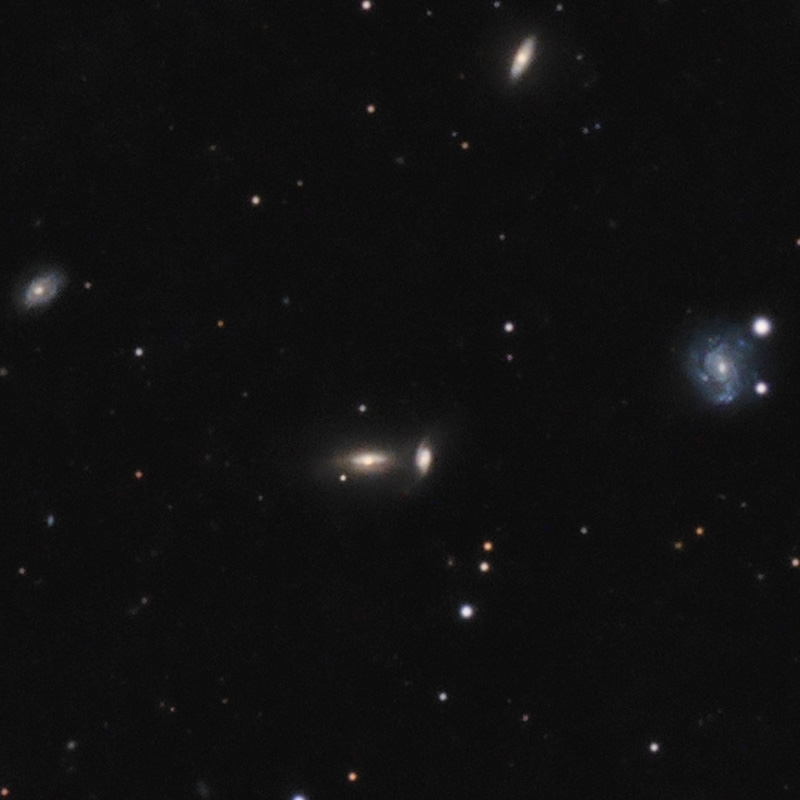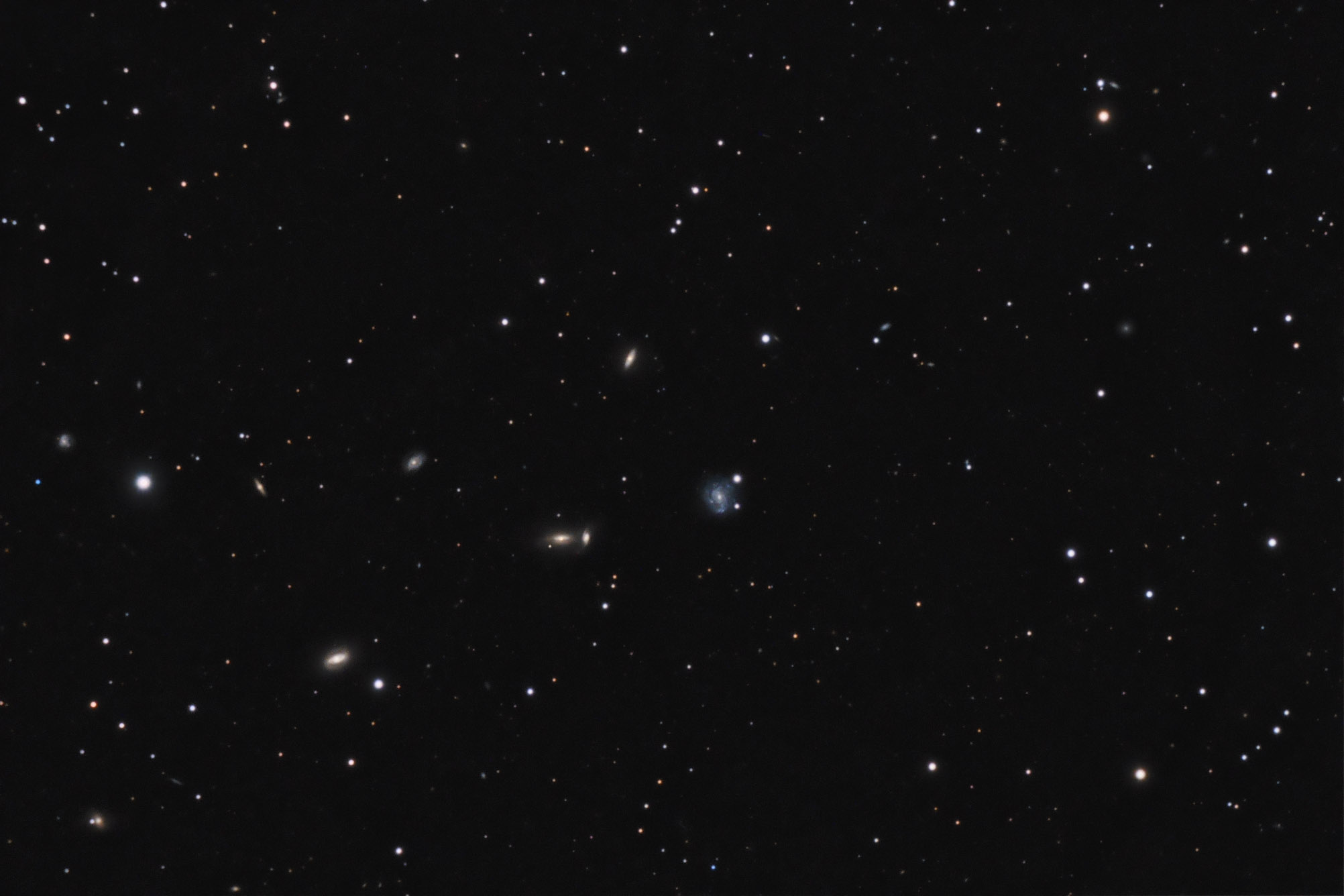| Description | Images |
Object name: ARP246Designation(s): ARP246, NGC7837, NGC7838, NGC7834, NGC7835, NGC7840, NGC0003, NGC0004, Arp 246/NGC 7837-8 is a pair of spiral galaxies Arp put in is very oddly named category for galaxies with the appearance of fission. As with all others in this category, I don't begin to see anything suggesting these are due to the division of what was once one galaxy. Arp apparently didn't either as his comment reads: "May not be physically connected." So why he put it here rather than in his double galaxy class I don't know. If his object had an NGC number he normally noted this yet for this pair that column in his atlas is blank. The pair was discovered on November 29, 1864 by Albert Marth. Related Designation(s):2MASS J00063782+0822042, 2MASS J00064678+0825337, 2MASS J00065141+0821047, 2MASS J00065393+0821031, 2MASS J00070877+0823000, 2MASS J00071680+0818059, 2MASS J00072441+0822255, 2MASS J00072451+0822275, 2MASX J00063780+0822045, 2MASX J00064677+0825335, 2MASX J00065141+0821045, 2MASX J00065396+0821027, 2MASX J00070878+0822598, 2MASX J00071680+0818058, 2MASX J00072439+0822253, AGC 100042, AKARI J0007169+081808, ARK 001, ARP 246, ARP 246 NED01, ARP 246 NED02, ARP246, CGCG 0004.1+0805, CGCG 0004.4+0804, CGCG 0004.4+0804 NED01, CGCG 0004.4+0804 NED02, CGCG 0004.7+0802, CGCG 408-030, CGCG 408-034, CGCG 408-034 NED01, CGCG 408-034 NED02, CGCG 408-035, EON J001.852+08.374, GALEXASC J000637.76+082203.4 , GALEXASC J000646.82+082531.4 , GALEXASC J000651.41+082105.6 , GALEXASC J000653.76+082102.9 , GALEXASC J000716.71+081805.6 , IRAS 00042+0804, IRAS 00047+0801, IRAS F00043+0804, IRAS F00046+0801, KUG 0004+080, LEDA 1345780, LEDA 212468, MCG +01-01-030, MCG +01-01-031, MCG +01-01-035, MCG +01-01-036, MCG +01-01-037, NGC 0003, NGC 0004, NGC 7834, NGC 7835, NGC 7837, NGC 7838, NGC 7840, NGC0003, NGC0004, NGC7834, NGC7835, NGC7837, NGC7838, NGC7840, NPM1G +08.0004, NSA 126210, NSA 126220, NSA 126228, NSA 153131, NSA 153133, NVSS J000653+082116, NVSS J000716+081804, PGC 000504, PGC 000505, PGC 000516, PGC 000525, PGC 000565, UGC 00049, UGC 00058, UZC J000637.8+082208, UZC J000654.0+082104, UZC J000716.8+081806, WBL 003-001, WBL 003-002, WBL 003-003, [HDL96] 408-054, [HDL96] 408-058, |


